Conductivity of solutions by the migration of ions
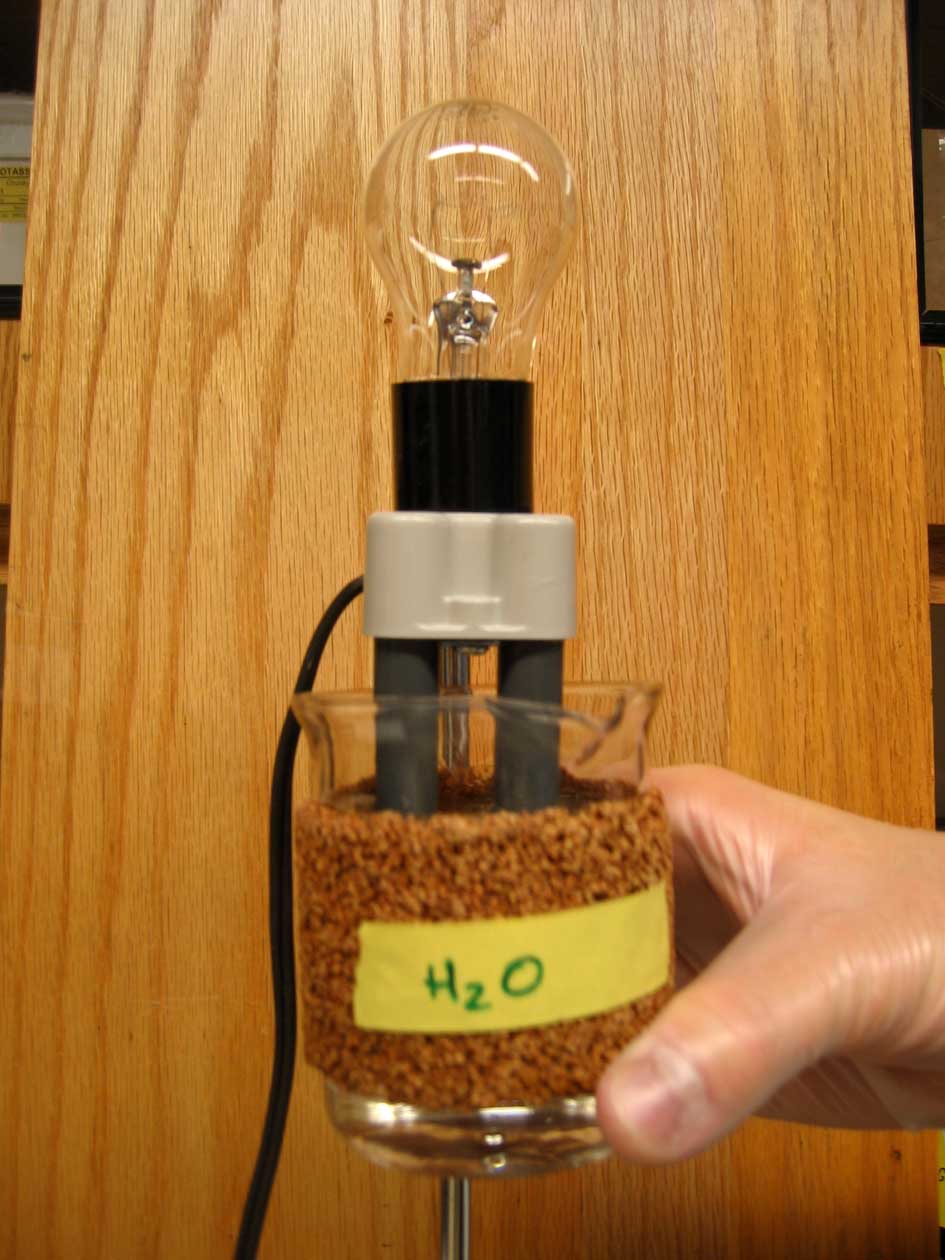 Pure water and aqueous solutions of table salt, acid, base, and table sugar are used to complete a circuit and light (or not) a light bulb.
Pure water and aqueous solutions of table salt, acid, base, and table sugar are used to complete a circuit and light (or not) a light bulb.
Ingredients: Light bulb connected to electrodes power cord and electrodes, beaker, water, table salt, sodium hydroxide, sulfuric acid, table sugar
Procedure: A complete recipe follows.
1. Prepare solutions and apparatus.
2. Insert electrodes into each solution, rinsing electrodes in between "dips."
3. Observe differences in intensity of light bulb.
Understanding: We know that in an electrical circuit, electrons flow through conducting wires creating an electrical current. When a light bulb is placed in the circuit, the current of electrons flows through a thin filament of tungsten within the bulb. The filament is resistant to the flow of electrons. Causing the electrons to flow by "pushing" them through the filament causes the filament to heat up and glow with black body radiation, giving off a broad spectrum of visible light that appears white to our eyes.
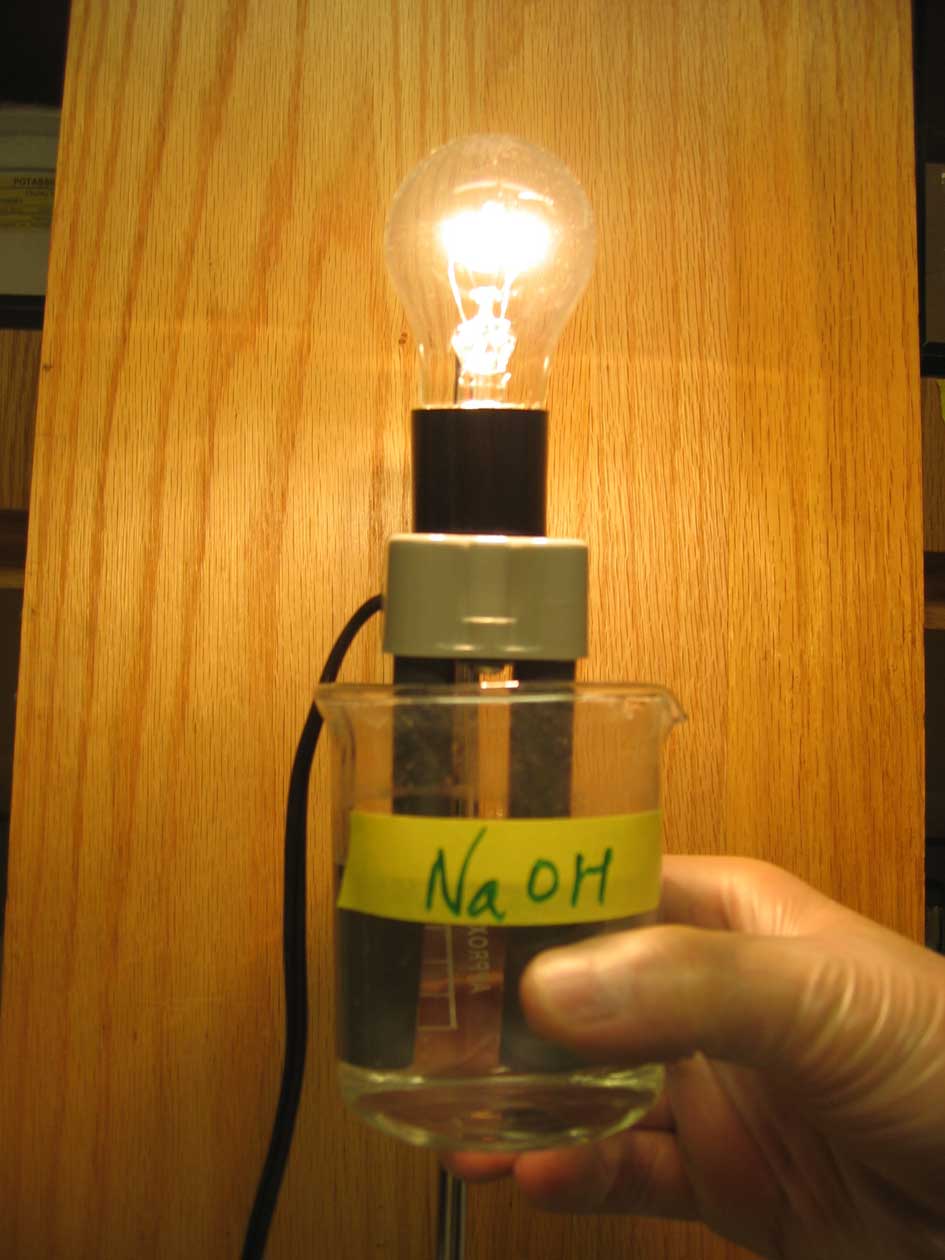
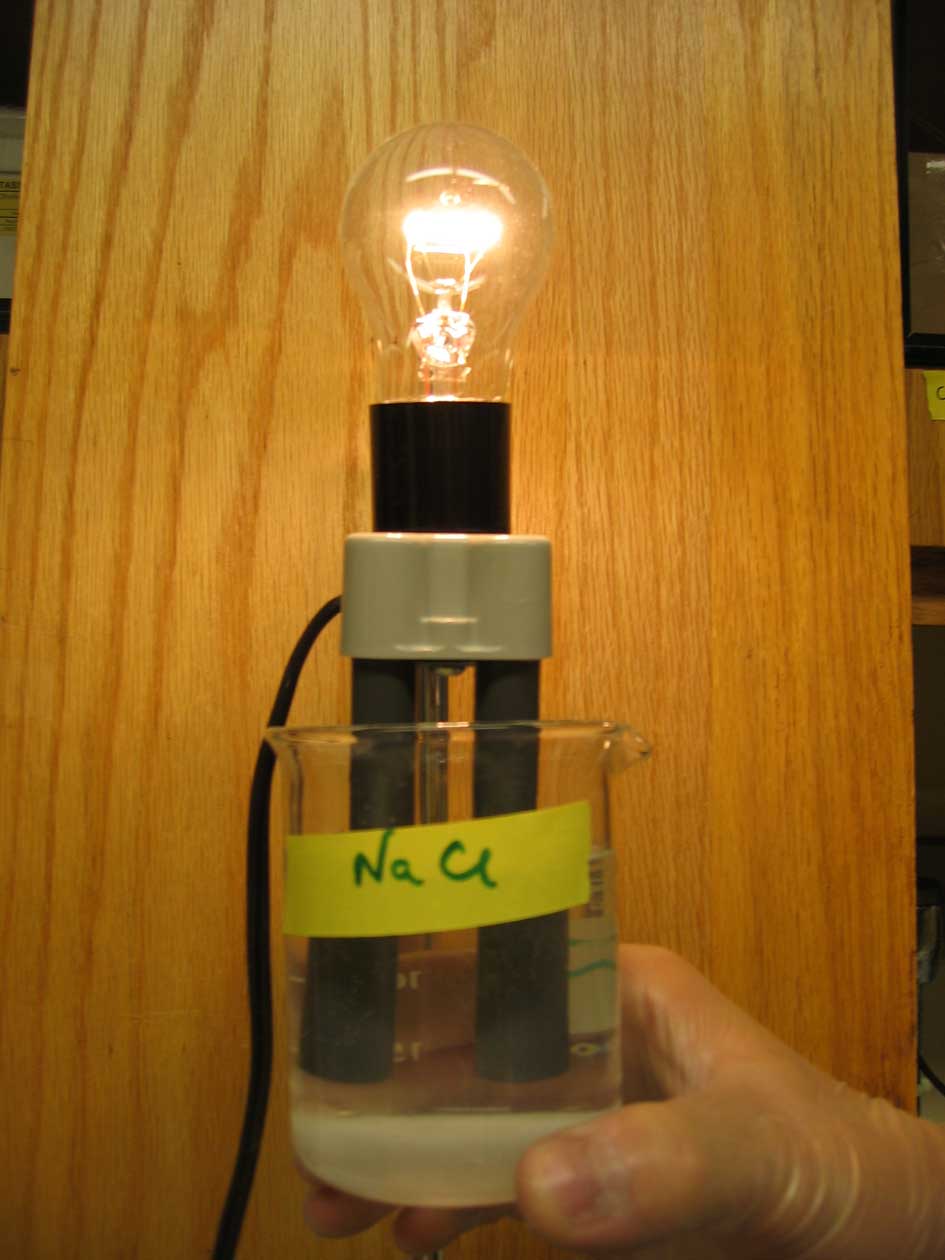 For an aqueous solution to "complete the circuit" and allow the light to glow, it must contain charged particles (electrons or protons) or ions in sufficient numbers to create an electrical current within the solution.
For an aqueous solution to "complete the circuit" and allow the light to glow, it must contain charged particles (electrons or protons) or ions in sufficient numbers to create an electrical current within the solution.
When the electrodes are placed in the pure water, the bulb does not produce light. When the electrodes are placed in a sodium chloride solution, the bulb does glow! The solvated sodium and chloride ions carry charges through the solution, completing the circuit and allowing the bulb to glow. Sodium chloride is a soluble salt that is known as a strong electrolyte, as it creates a concentrated solution of electrically charged ions.
The solutions of sodium hydroxide, a strong base, and sulfuric acid, a strong acid, complete the circuit, allowing the bulb to glow brightly. Sodium hydroxide is a strong base because it is a strong electrolyte, it dissociates almost completely, creating a concentration of sodium ions and hydroxide ions essentially equal to the initial concentration of sodium hydroxide.
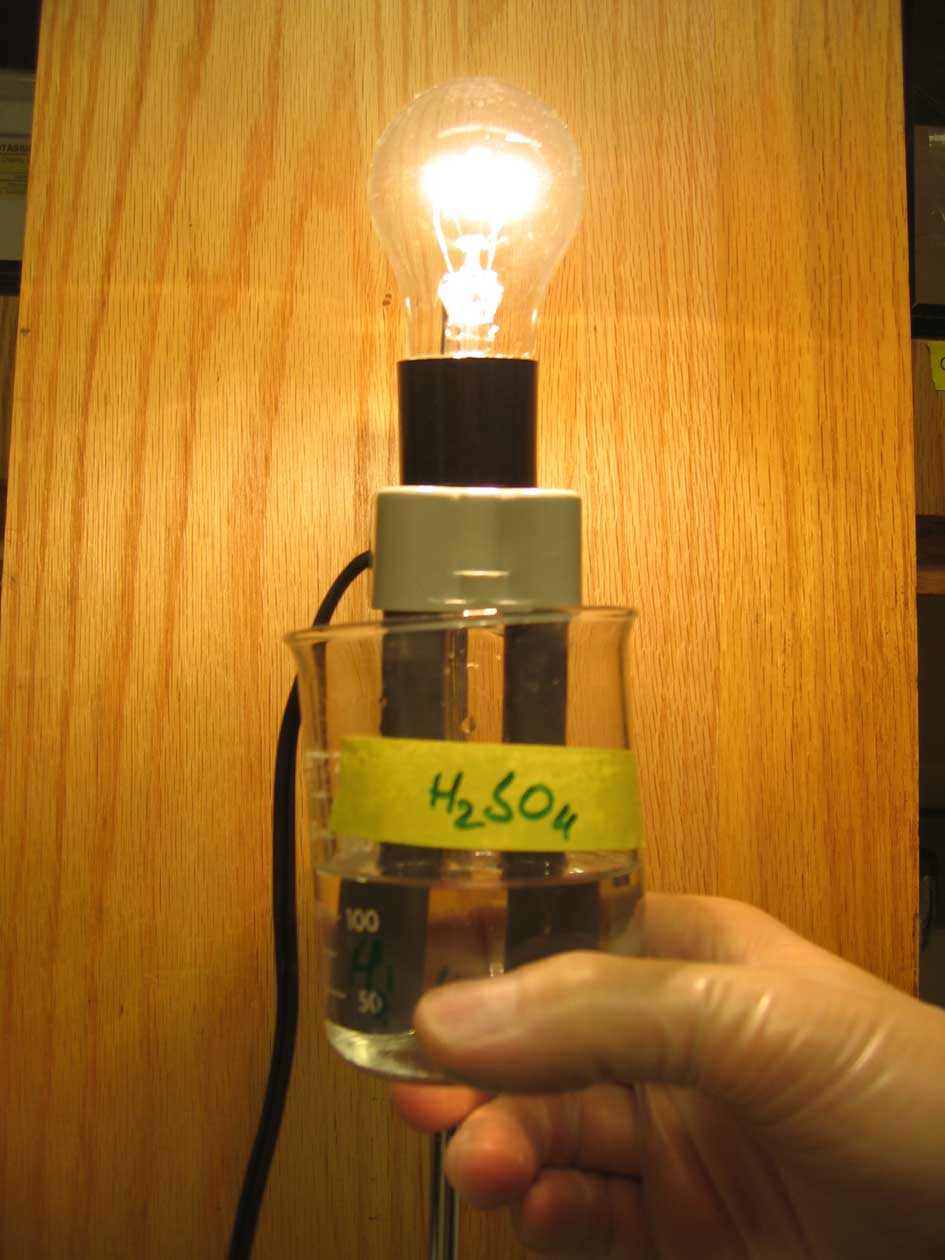
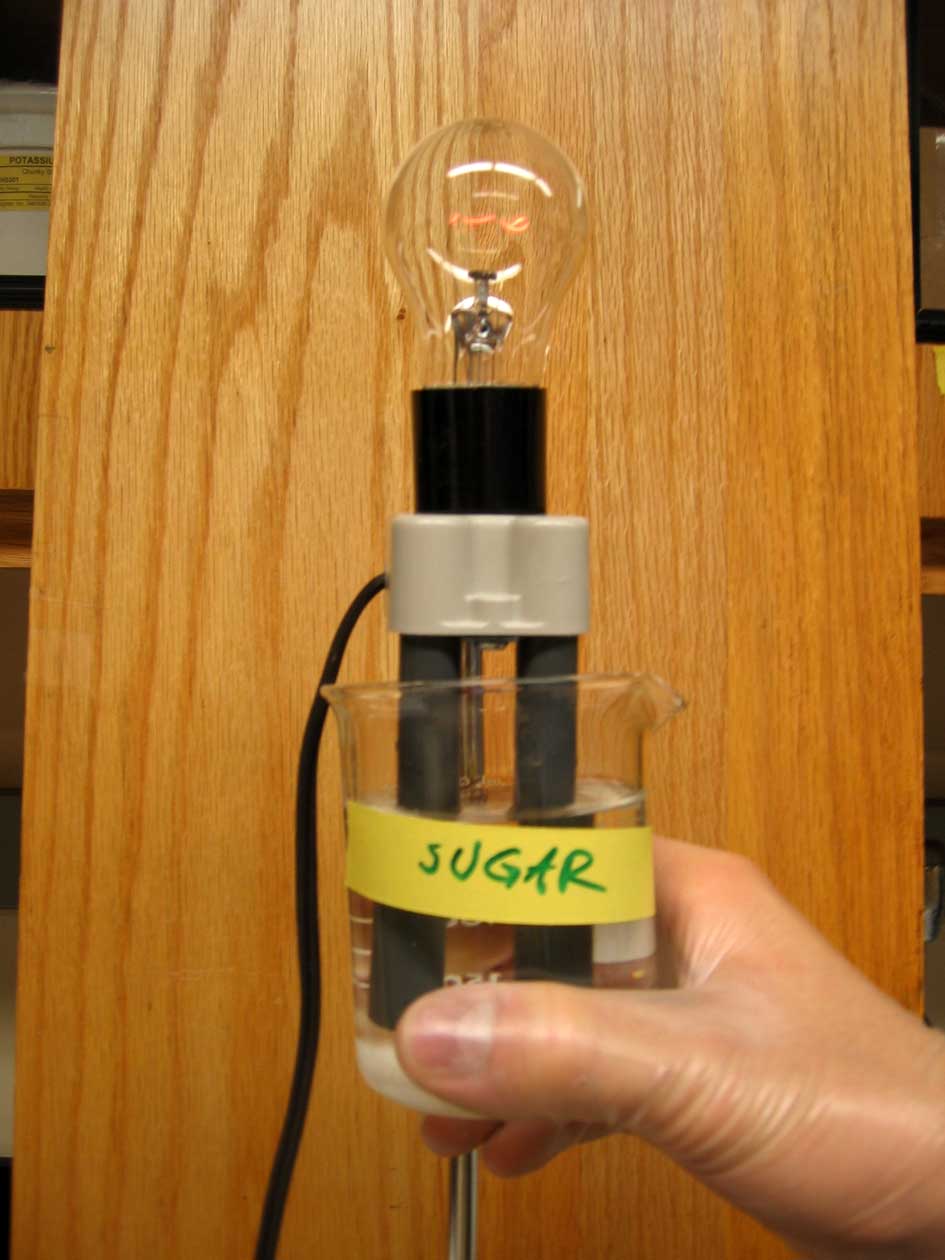
The story is the same for sulfuric acid, but also different. Sulfuric acid is a strong acid and strong electrolyte. But each molecule of sulfuric acid can dissociate to produce three ions in solution, making the concentration higher in ions that act as charge carriers. Using equal concentrations of sodium hydroxide and sulfuric acid, the sulfuric acid will allow the bulb to glow more brightly.
Table sugar (sucrose, C12H22O11) is a substance that, like table salt (sodium chloride, NaCl) is highly soluble. However, unlike table salt, it is not a strong electrolyte. The sugar molecules are highly polar, and highly soluble in water at room temperature. However, the neutral sugar molecules do not carry a charge, and so do not flow through the water to complete a circuit. As a result the bulb (almost) does not light. But look closely! In our experiment, there is a weak glow of the filament when the electrodes are immersed in the sucrose solution. What gives?
Dim view of pure water
Question: We have learned that pure water exists as a mixture of water molecules, at a concentration of roughly 55 moles per liter. However, about one in a billion water molecules has dissociated to create a positively charge hydrogen ion (a proton) and a negatively charged hydroxide ion, OH-. So there are charges in the water. Why is it that the bulb does not light?